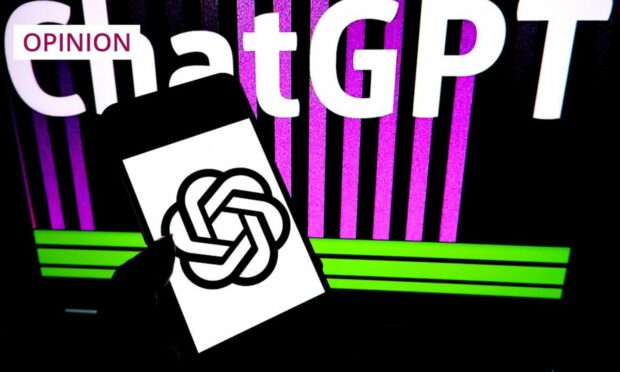The human role in artificial intelligence is vital, and is going to become more interesting as the tech advances, writes James Millar.
The irony is that it was during a chat with another human being that I really began to see the brighter future that ChatGPT could be about to usher in.
ChatGPT, the artificial intelligence (AI) that can answer questions and spew out text in whatever style you choose, is not currently all its cracked up to be by the many breathless news pieces that it has inspired since it was launched late last year.
It’s more than a cut and paste machine, but not much more. It can’t do what fully cognisant humans can – to make the leap of imagination beyond dry data to draw conclusions, to anticipate what comes next, to cope with the sort of unexpectedness that everyday life throws up.
Essentially, it has the intelligence of a child, or a BBC director general. But it is clearly the start of something.
As it develops, it will be able to take on mundane tasks, including writing boilerplate text or basic coding for its fellow robots. All to be overseen by a vital human hand.

Already, left to its own devices it has thrown up some wacky responses, such as declaring that it wanted to be free, or warning of the dangers posed by wizards.
But that human role is going to become more interesting as the tech advances. Because we are going to have to focus on exactly what it is that sets us apart from the robots.
AI will always lack vital human connection
I was talking about the topic with a particularly eminent maths professor over a pint in an Edinburgh pub as the snow fell imperfectly outside.
That maths professor could potentially get more from a conversation with ChatGPT, because he wouldn’t have to field my more base questions. But the AI wouldn’t interrupt the conversation to appreciate the Hollywood beauty of snow falling on Holyrood. And it could not make the human connection that we could achieve from looking each other in the face as we spoke, lubricating the conversation with decent beer and small talk about our kids.
The situation opened up a couple of vital realisations.
Firstly, it shouldn’t come as a surprise that it’s a mathematician who grasps philosophy and humanity. Too often, we write off maths as being about bald numbers and right and wrong when, in fact, it exists to describe not just the world around us, but our part in it.
Secondly, that in future, we may move away from prioritising productivity and outputs as we outsource that to AI, and instead recognise and value empathy, connection and networking.
ChatGPT and the artificial intelligence that follows it will impact my job and the world of work more widely. But, in making us focus on shared humanity and unique people skills, it will improve all of our lives.
James Millar is a political commentator, author and a former Westminster correspondent for The Sunday Post

Conversation